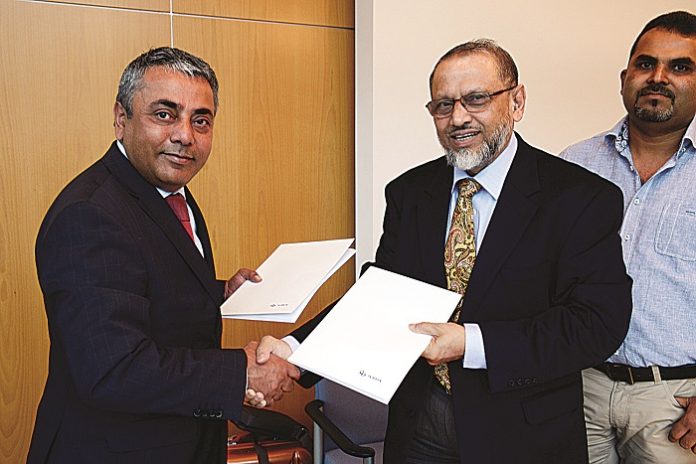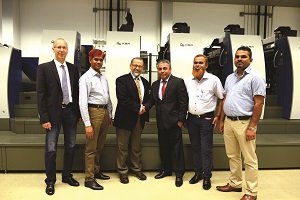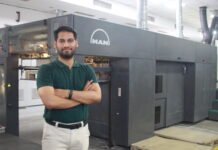
Driven largely by the garment export industry, printers who can meet global standards
are growing in Bangladesh and adopting the latest technologies.
Dhaka-based Swisstex Printers has recently finalized an order for a KBA Rapida 105 6-color plus coater sheetfed offset press. The press is configured for both conventional and UV production, and is scheduled to go into operation in Bangladesh in spring 2016. Swisstex Printers is a subsidiary of Swiss Tex Group, a producer of labels for the clothing industry.
The company has been producing tags and labels using various technologies since 1995. It took up offset printing around the turn of the century and purchased its first multi-color offset press in 2007. Swisstex has 11 single- and multi-color sheetfed offset presses and is also active in flexo and screen printing as well as woven labels for the export clothing industry. Some 200 of the company’s approximately 1,000 employees are responsible for print production, working in three shifts six days a week in a 35,000 square foot plant in Dhaka.
Alongside labels, Swisstex offers photo cards and packaging primarily for the clothing industry. Its global clients include Marks & Spencer, Mango, H&M and Khappahl or Varner.

of Swisstex Printers; Shibbir Mahmud, Swisstex Group chairman; Bhupinder Sethi, KBA; and Ali Amzad Hossain and Shohag Hossain, managing directors of the sales agency Graphic Solution in Bangladesh
International clients expect their work to be handled on modern equipment. That applies equally to print products, and it was not least for this reason that company chairman Shibbir Mahmud; his son and managing director, Sajjad H Mahmud; and Mohammad Iqbal Ahmed Khan, director of Swisstex Printers; decided to install the new KBA Rapida 105. Features of the press include CleanTronic Impact washing systems, an emission extraction system, three UV interdeck dryers, VariDry dryers (IR/hot air and UV) in the triple-length extended delivery and the ErgoTronic ColorDrive density measuring system.
In addition, the press is raised by 450 mm to enable higher sheet piles and incorporates both a CX accessory package for board handling and provisions for mixed operation with conventional and UV inks and coatings. According to the Swisstex management, the new press will be the first UV sheetfed offset press in Bangladesh. This capability is also the basis for the company’s plans to print on plastic films for the transparent packaging of appropriate clothing items.
This Rapida 105 is not the only KBA sheetfed offset press currently earmarked for Bangladesh. Two Rapida 75 presses and a further Rapida 105 are also being installed in the country this year.










